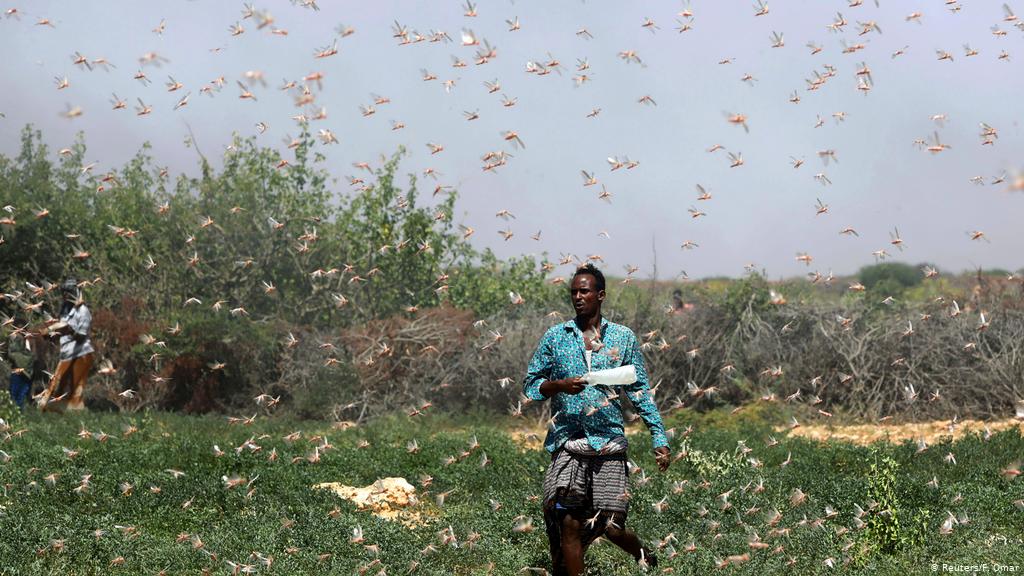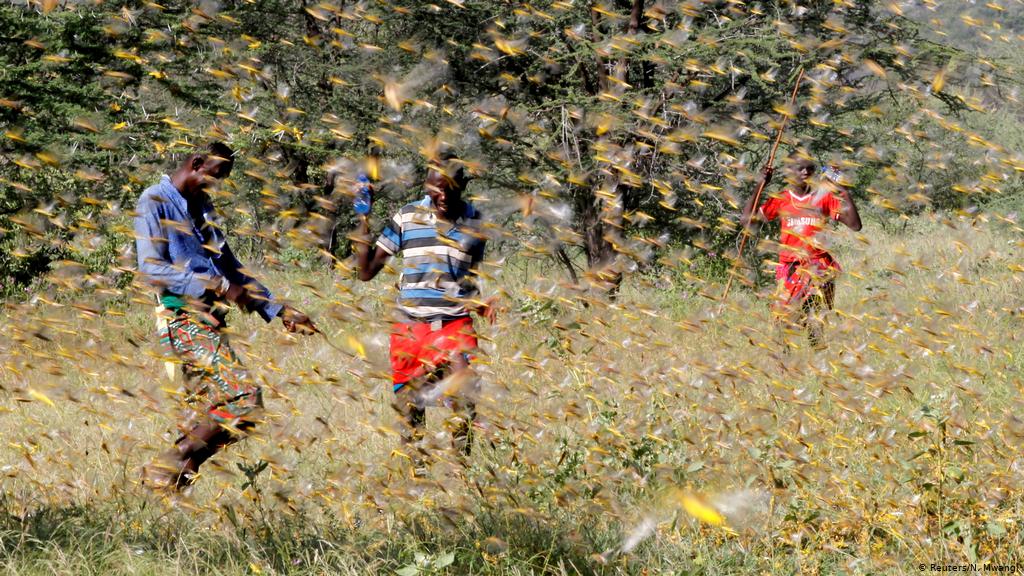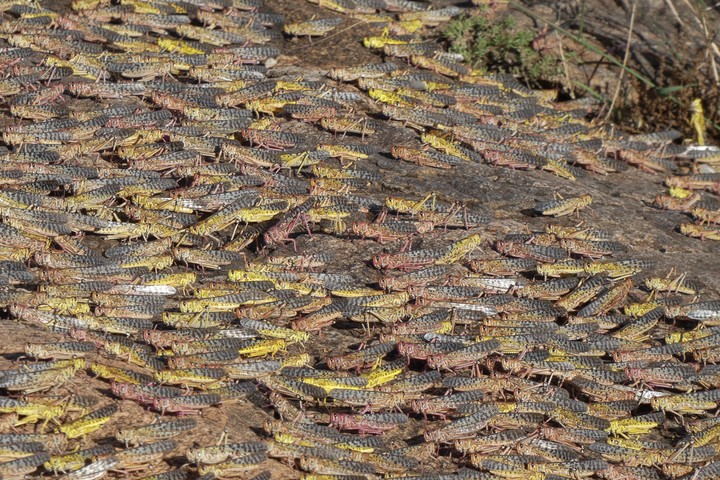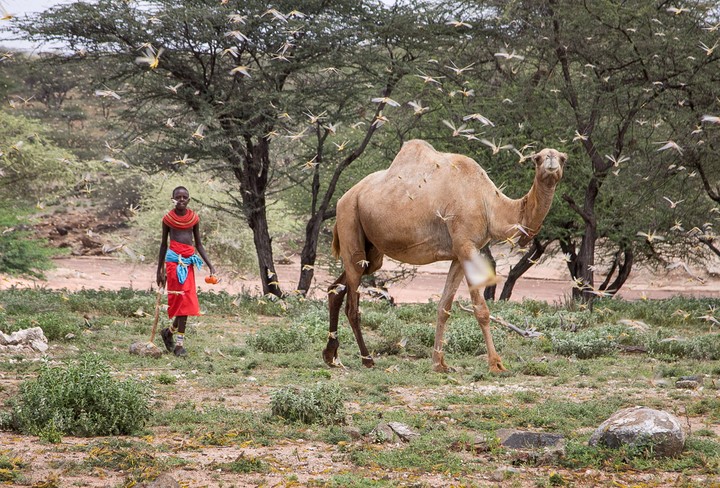
A
locust invasion in Ethiopia, Kenya and Somalia has left crops
devastated. It is the biggest swarm in decades, with billions of the
ravenous insects nibbling their way through the already climate-ravaged
region.
Thick clouds of locusts are blackening the skies of
East Africa from Ethiopia and Somalia into Kenya due to extreme weather
changes.
Experts warned Friday that the insect infestation could
have disastrous effects on a region still recovering from recent drought
and aggressive flooding.
The United Nations Food and
Agriculture Organization (FAO) estimated that one locust invasion in
Kenya covered around 2,400 square kilometers (930 square miles) and
contained up to 200 billion locusts which descend to feed off plants and
vegetation.
People in Kenya have been seen shooting in the air,
waving sticks, banging cans and running around trying to chase the
locusts away, according to the Associated Press news agency.
Biggest in decades
For
Ethiopia and Somalia, the infestation is the biggest in 25 years, and
for Kenya it is the greatest swarm in 70 years, according to the FAO.
A
locust consumes their own weight in food every day. Farmers face
frustration as vegetation for their livestock is consumed by the
ravenous locusts. Many were just slowly recovering from three years of
drought, a process which usually takes up to five years.
The FAO
warned that the insects could "reproduce rapidly and, if left unchecked,
their current numbers could grow 500 times by June,'' spreading to
Uganda and South Uganda.
People have been seen shooting in the air or waving sticks to fend off the locusts
Climate crisis
In
an already vulnerable region with high levels of poverty, the locusts
can further devastate crops, resulting in "a major food security
problem", said Guleid Artan of the Climate Prediction and Applications
Centre at a press conference in Nairobi.
The locusts, he warned,
were the latest symptom of extreme weather conditions that also saw a
2019 drought end in one of the wettest rainy seasons in four decades in
parts of East Africa, with mass floods killing hundreds. The year 2019
witnessed eight cyclones, the most in a single year since 1976.
From East Africa to Australia
Artan
attributed the weather crisis in East Africa to a warmer western Indian
Ocean — a climate condition referred to as the Indian Ocean Dipole
which has conversely led to extreme drought in Australia.
Miles away, Australia is also currently undergoing its own nature extremities: wildfires, dust storms, flooding and hail.
"We know East Africa is one of the most vulnerable to climate change. We know this region will see more extremes," Artan said.
If
the locusts are not controlled by the beginning of the next planting
and rainy season around March, herders could see more crops devastated.




Post a Comment